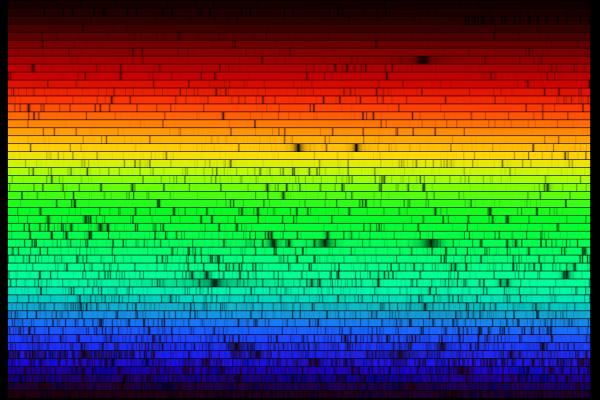See other Science/Tech Articles
Title: Astronomy Picture of the Day
Source:
http://antwrp.gsfc.nasa.gov/apod/ap050227.html
URL Source: http://NASA
Published: Feb 27, 2005
Author: Robert Nemiroff (MTU) & Jerry Bonnell (U
Post Date: 2005-02-27 08:17:41 by 2Trievers
Keywords: Astronomy, Picture
Views: 143
Comments: 1
Discover the cosmos! Each day a different image or photograph of our fascinating universe is featured, along with a brief explanation written by a professional astronomer. Explanation: It is still not known why the Sun's light is missing some colors. Shown above are all the visible colors of the Sun, produced by passing the Sun's light through a prism-like device. The above spectrum was created at the McMath-Pierce Solar Observatory and shows, first off, that although our yellow-appearing Sun emits light of nearly every color, it does indeed appear brightest in yellow-green light. The dark patches in the above spectrum arise from gas at or above the Sun's surface absorbing sunlight emitted below. Since different types of gas absorb different colors of light, it is possible to determine what gasses compose the Sun. Helium, for example, was first discovered in 1870 on a solar spectrum and only later found here on Earth. Today, the majority of spectral absorption lines have been identified - but not all. Astronomy Picture of the Day
Credit & Copyright: Nigel Sharp (NSF), FTS,
Post Comment Private Reply Ignore Thread
Top • Page Up • Full Thread • Page Down • Bottom/Latest
#1. To: 2Trievers (#0)
Much more appropriate, don't you think?

Top • Page Up • Full Thread • Page Down • Bottom/Latest
